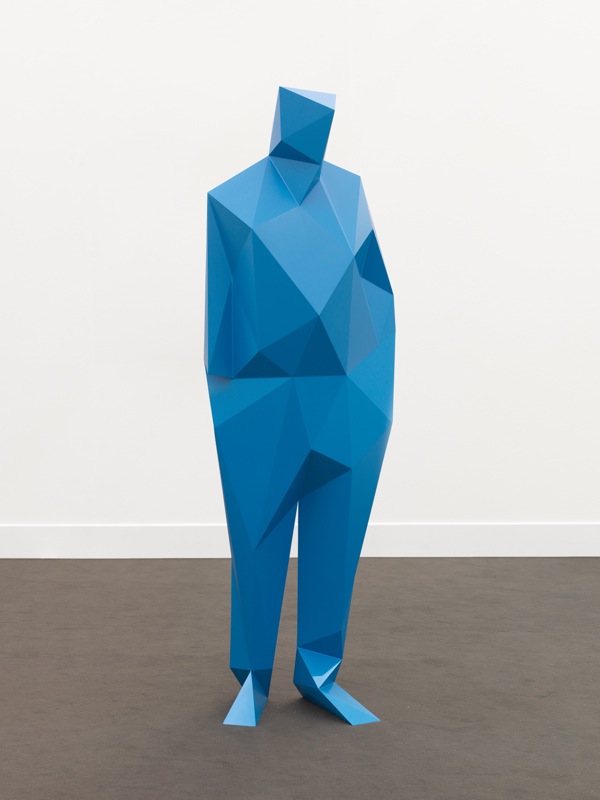Xavier Veilhan
Tuesday, 19 October 2010
Work from his oeuvre.
“Whether he uses digital photography, sculpture, public statuary, video, installations or even the art of the exhibition, Xavier Veilhan builds his work around the same axis: the possibilities of representation. One of the most striking features of his polymorphic practice is that he treats generic objects and shapes of everyday life so that they come out smoothed, without details, and resistant to any psychological insight. Since the 1990s, bestiaries occupy a significant place in this process, and among them, penguins and rhinoceros of unnatural colours, made of painted polyester resin. The Rhinocéros (1999), made on real-scale, was lacquered in Ferrari red, in a way that instantly modifies the perception of the mastodon’s “body work”. Already in 1995, with Les Gardes Républicaines, he had produced a completely generic set of four mounted guards. The statues stood like real size toy figures. Veilhan’s figures are archetypes reduced to essentials, prepared so as to allow the viewer to immediately project himself beyond the anecdotal. Without seeking to be a perfect copy, they manage to impose their intimidating authority over him.
Fascinated by the issues of modernity and technical progress, Veilhan was also interested in mechanical systems and in the way these are constructed. With Ford T (1997-1999), he even went against “Fordism” by conducting the handmade reconstruction of this 1910 car, a symbol of the first mass productions. From stereotype to prototype, the artist has clouded the issue and covered his tracks by playing with the standards. The Ford Model T was then followed by bicycles, a motor scooter, and more recently, a Swiss cuckoo clock. This huge sixteen feet long mechanical artwork, equipped with colored lacquered wheels, measures an enigmatic amount of time when a metallic sphere is activated in its system. As with the bestiary, mechanical modernity has been a guiding thread all through his career (which started at the end of the 1980s), and is still present in his most recent exhibitions.
With La Forêt or La Grotte (made in 1998), Xavier Veilhan proposes visiting experiences that take place in huge environments. The framework is always visible so as not to create false illusions: in Veilhan’s art, construction is essential. Rolls of grey felt, that function as trunks, suggest a forest. The same material covers the ground. The sensible experience of this synthetic environment is plunged into a muffled atmosphere, confined and soundproofed by the material here used, as it dissects the automatisms of identification by resorting to strong cultural symbols. Veilhan employs these devices both in his major works and in isolated objects. “Transforming signs into instruments”: he likes to confess his passion by sublimating it into statues and exhibitions. In fact, after his major installations at the end of the nineties, not only did he had a go at making a scenography of his own works (Le Plein Emploi, Strasbourg 2005), he also made two others shows with the works of other artists (Projet Hyperréaliste/ The Photorealist Project, for the Lyon Biennale in 2003, or the sculptural Baron de Triqueti, in 2006). The possibilities offered by the art of the exhibition, from the Versailles gardens, through the techniques employed in constructivist propaganda, to the World’s Fairs, constitute a series of fruitful analytical issues for an artist who’s interested in the orchestration of power and its iconographic materialization. Following this logic, Xavier Veilhan has answered to a number of public commissions in France, creating a grey monster in Tours (2006), a blue lion in Bordeaux, and a bear, penguins and other characters in Lyon (2006). The archetype becomes here a catalyst that gives way to a reflection on the commemorative dimension of public statuary and on its action as a sign in our urban everyday life.” – Benedicte Ramade.



